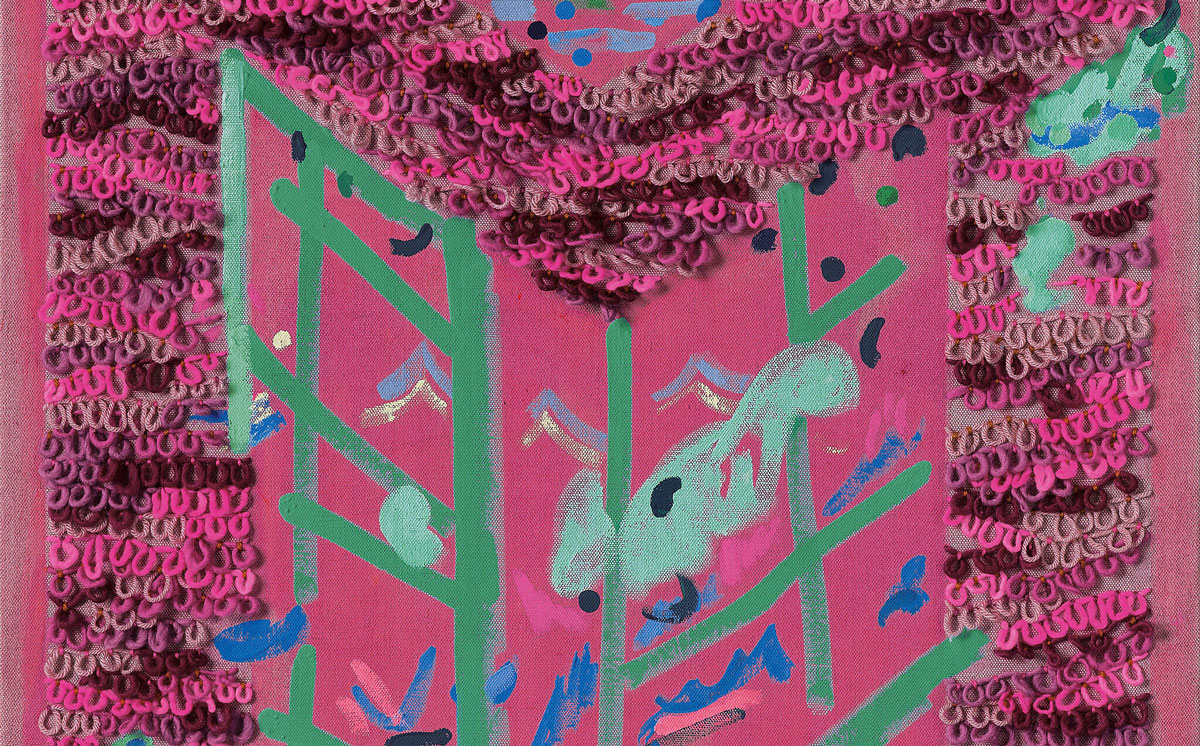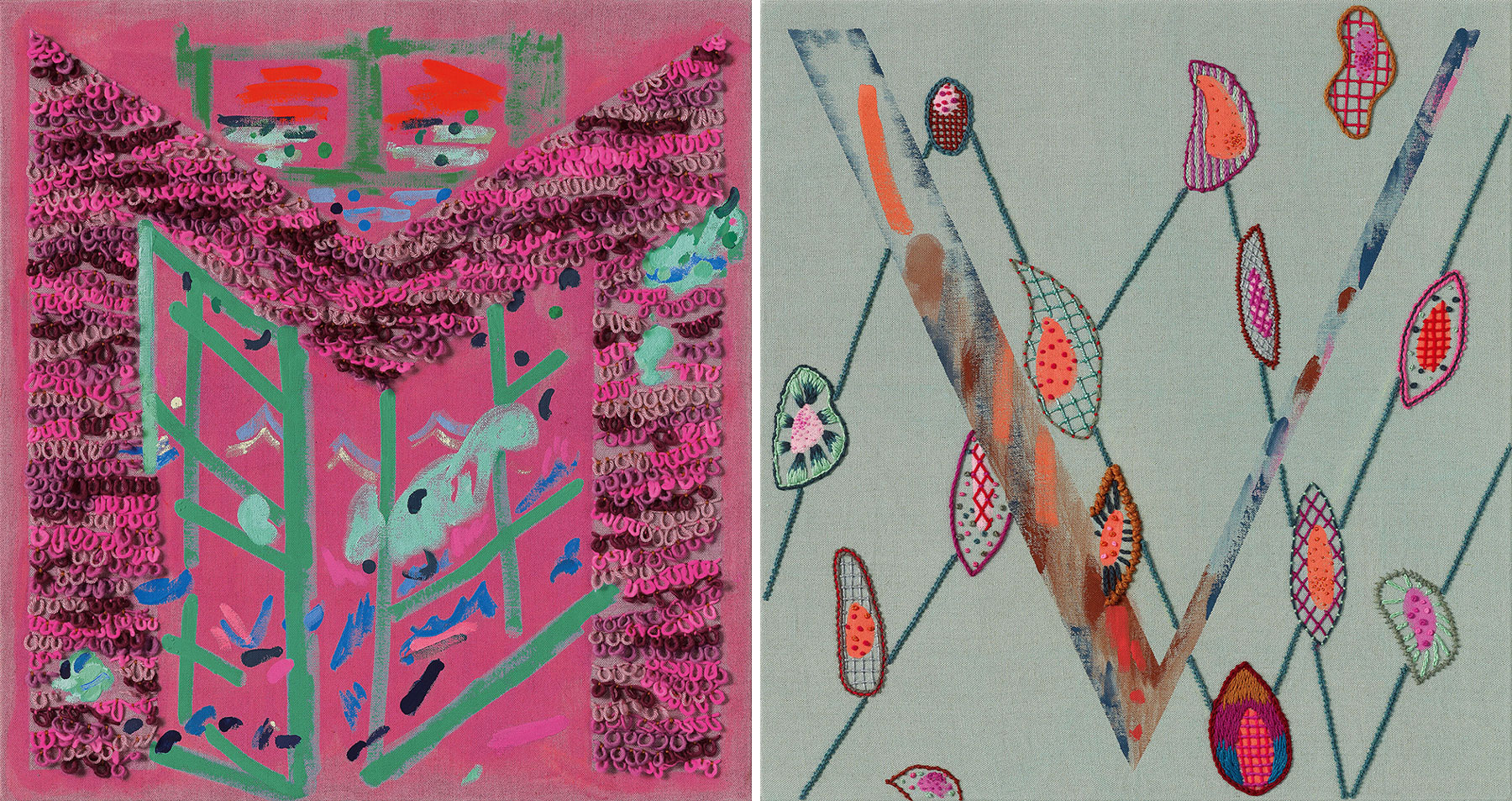ART-PRESENTATION: Laura Owens-Rerun, Part II
 Laura Owens is known for her ranging and experimental approach to the medium of painting. Her work embraces a breadth of sources from the avant-garde to the popular to the decorative. Owens grew up close to Cleveland in Norwalk, Ohio, and as a teenager spent many hours studying the Cleveland Museum of Art’s encyclopedic collections. Having lived in Los Angeles for the last three decades, she now returns to Cleveland to develop an exhibition in collaboration with high school students participating in the CMA’s Arts Mastery program.
Laura Owens is known for her ranging and experimental approach to the medium of painting. Her work embraces a breadth of sources from the avant-garde to the popular to the decorative. Owens grew up close to Cleveland in Norwalk, Ohio, and as a teenager spent many hours studying the Cleveland Museum of Art’s encyclopedic collections. Having lived in Los Angeles for the last three decades, she now returns to Cleveland to develop an exhibition in collaboration with high school students participating in the CMA’s Arts Mastery program.
By Dimitris Lempesis
Photo: Cleveland Museum of Art Archive
In the exhibition “Rerun”, Laura Owens’ well known works that span her career, are shown alongside the artist’s own art from high school, presented publicly for the first time at Transformer Station’s main gallery in Cleveland. The Crane Gallery features a new site-specific installation of Owens’ unique handmade wallpaper. The exhibition also presents objects from the CMA’s Education Art Collection, which includes more than 10,000 pieces from many different eras and regions of the world and was created to be shared with Cleveland area schools for educational purposes. For more than twenty years, Laura Owens has pioneered an innovative-approach to painting that challenges traditional assumptions about the nature of figuration and abstraction, the relationships among avant-garde art, craft, and pop culture, and the interplay between painting and contemporary technologies. Owens emerged on the Los Angeles art scene shortly after completing her studies at the California Institute of the Arts in 1994, at a time when painting was viewed with suspicion by the academic establishment and many of her peers favored more conceptual approaches to art-making. Owens bucked this prevailing trend with a series of large-scale canvases marked by their grand ambition on the one hand, and their incorporation of humbler, low-key marks and subjects, on the other, merging abstraction with goofy personal allusions, as well as materials that seemed more the province of craft stores than the fine arts. References to cartooning, doodling, and a high-pitch, sometimes pastel palette served as further irritants to ingrained painterly pieties. Over the ensuing decade Owens established herself as a key voice pushing painting towards a new conception of site-specificity grounded in the social, poetic, and architectural conditions of a particular place. Early on, she demonstrated a keen interest in how paintings function in a given room and used trompe-l’oeil techniques to extend the plane of a wall or floor directly into the illusionistic space of her pictures. These canvases often featured paintings within paintings and sometimes paintings within those, creating an effect of Russian nesting dolls that confused the boundaries of actual and pictorial space, as well as reality and representation. Owens’s approach offered a highly original conception of how a portable painting might allude to its initial setting (and its siblings in a series) while nevertheless remaining distinct from it, unlike the in-situ wall paintings of previous generations. These works demonstrate a self-conscious and reflexive relationship to the physical world they occupy, while opening, almost paradoxically, onto a lush space of reverie, conjecture, and play. Owens’s interest in American folk art, historical tapestries, and other vernacular forms led her to fill her canvases with imagery and materials, such as felt applique and needlework, that were anathema to more serious discourses on painting and to some of her critical commentators. Yet this omnivorous approach to source material and technique allowed her to push painting forward and to engage broader social issues in surprising ways. In the aftermath of the United States’s call to war following the events of 9/11, Owens turned to almost childlike depictions of 19th-century American soldiers and medieval images of knights to address our increasingly bellicose national conversation. Her longstanding preoccupation with supposedly “feminine” colors and motifs from charming animals to infantile gestures, as well as her allusions to romantic love and motherhood (including the incorporation within her work of her own children’s drawings and stories) has led to a disruptive rethinking of feminism in art. Apart from imagery and palette, she regards her questioning of dominant hierarchies and conventional notions of “good taste” as a feminist attack on artistic orthodoxies. Over the past five years, Owens has charted a dramatic transformation in her work, marshaling all of her previous interests and talents within large-scale paintings that make virtuosic use of silkscreen, computer manipulation, digital printing, and material exploration. Wild blown-up brushstrokes push off finely printed appropriations from newspapers and other media sources; actual wheels or mechanical devices like clock hands spin across a painting’s surface; images shuttle between the physical and virtual worlds to arrive back on canvas magically transfigured by their journey. In a 2015 Berlin exhibition, Owens precisely positioned a group of five, large, freestanding paintings in a staggered row so that from a specific vantage the writing on their surfaces resolved into a unified image in the eye. The following year she created an installation at the CCA Wattis Institute for Contemporary Arts in San Francisco where paintings were embedded within walls covered in custom-printed wallpaper. Visitors were encouraged to interact with the installation by sending text messages to various numbers that triggered elliptical spoken replies broadcast by hidden speakers. Such bold experimentation with painting, sculpture, reference, and process have made Owens an important exemplar for younger generations of artists, many of whom cite her work as a key touchstone. Furthermore, she is a co founder and programmer of 356 S. Mission Rd., a collaborative art gallery, bookstore, and event space that hosts regular exhibitions, readings, and screenings and has become a crucial gathering place and beacon for the Los Angeles art community and beyond.
Photo: Laura Owens, Untitled (detail), 2012. Acrylic, oil, vinyl paint, charcoal, yarn, and cord on hand-dyed linen, 33 panels, 35 1/2 x 33 1/4 in. (90.2 x 84.5 cm) each. Collection of Maja Hoffmann/LUMA Foundation. © Laura Owens
Info: The Cleveland Museum of Art, Transformer Station, 1460 West 29th Street, Cleveland, Duration: 27/2-30/5/2021, Days & Hours: Wed-sun 11:00-17:00, https://transformerstation.org



Right: Laura Owens, Untitled, 2008. Acrylic and oil on linen, 25 1/2 x 19 in. (64.8 x 48.3 cm). Collection of Mario Testino, © Laura Owens

Right: Laura Owens, Untitled (Detail), 2012. Acrylic, oil, vinyl paint, charcoal, yarn, and cord on hand-dyed linen, 33 panels, 35 1/2 x 33 1/4 in. (90.2 x 84.5 cm) each. Collection of Maja Hoffmann/LUMA Foundation, © Laura Owens

